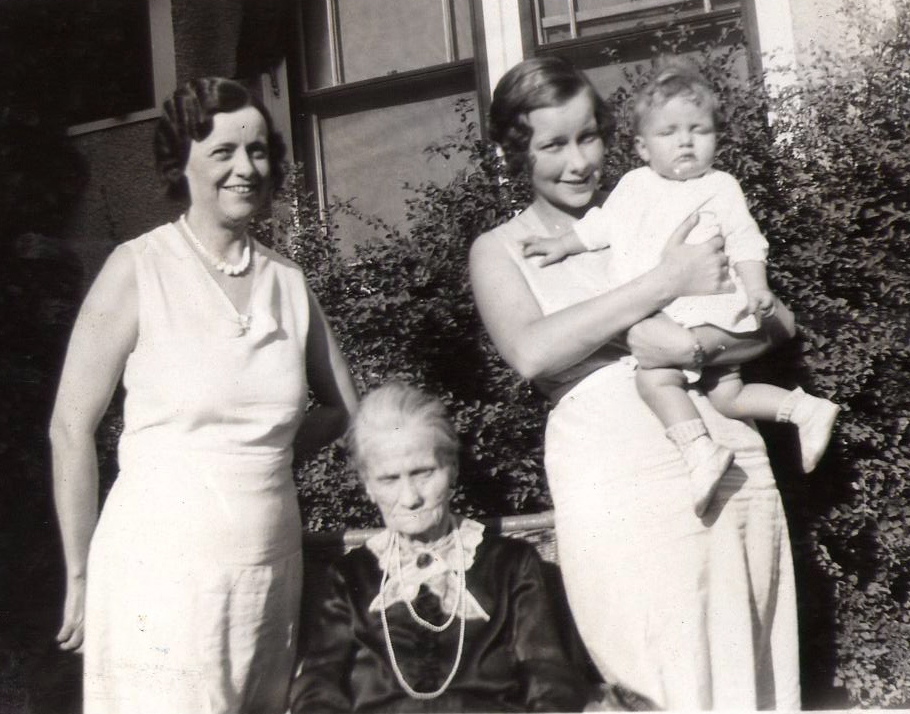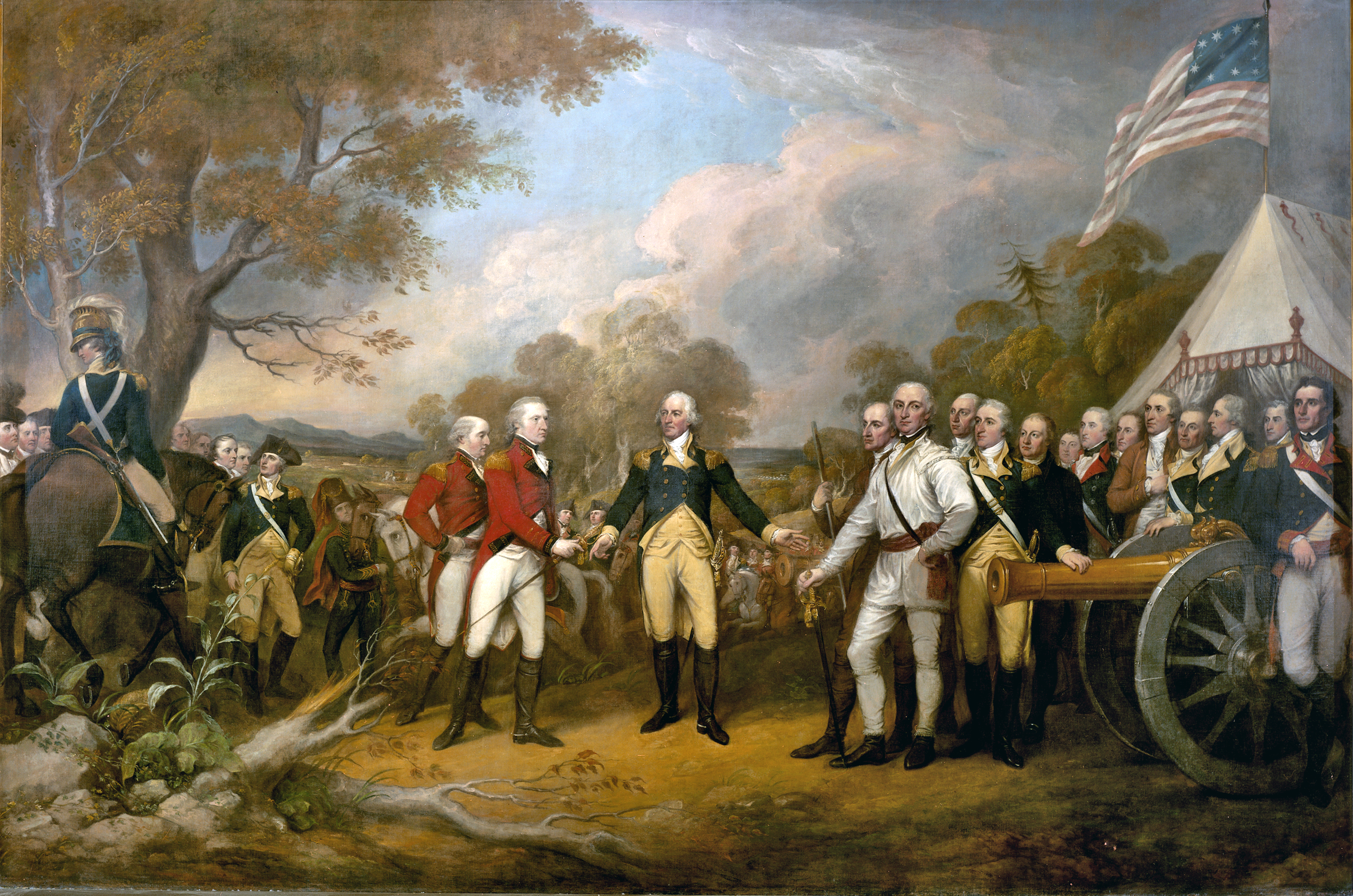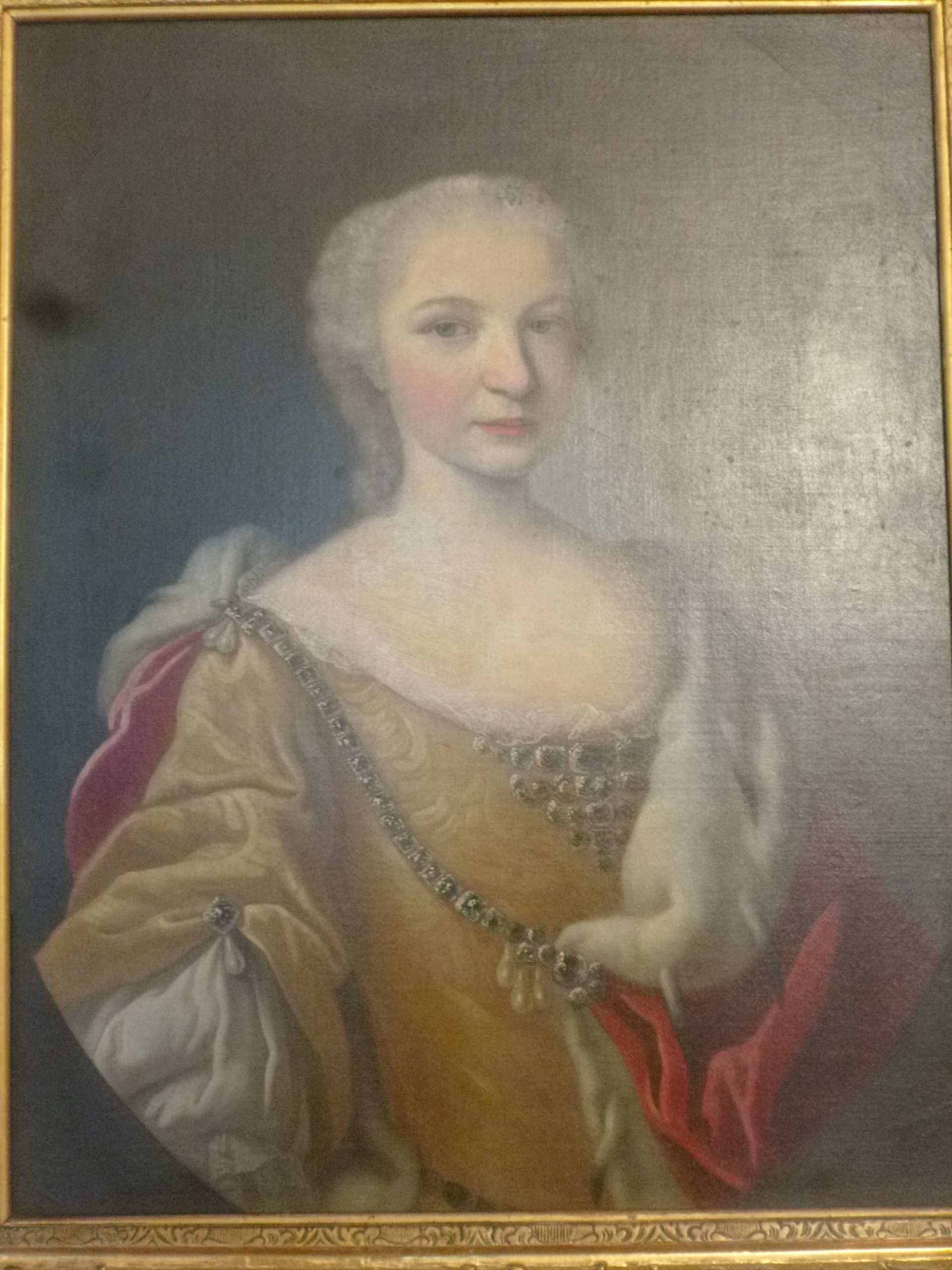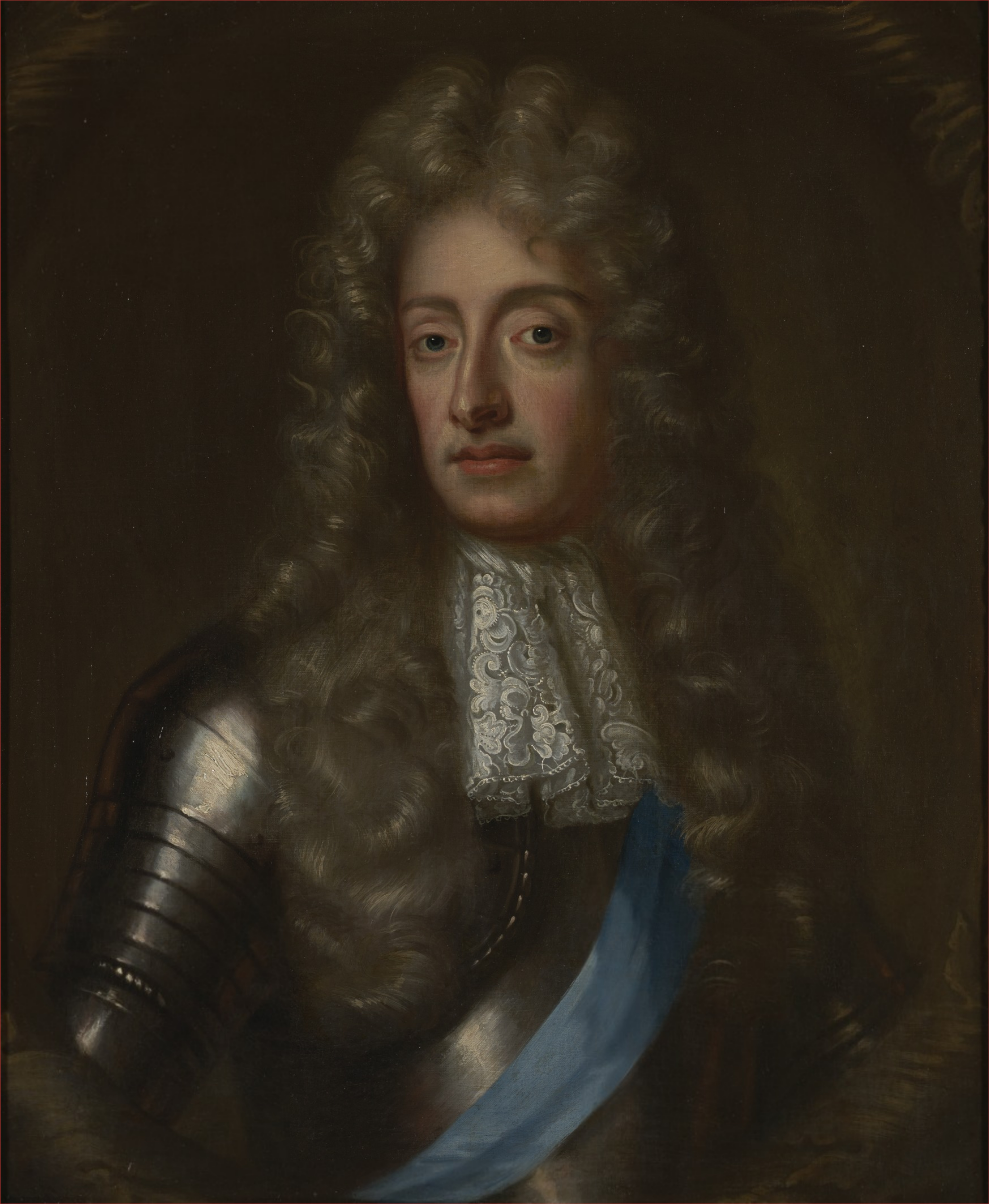|
Princess Benedetta D'Este
Benedetta Maria Ernestina d'Este (18 August 1697 – 17 September 1777) was an Italian noblewoman and princess of the Duchy of Modena and Reggio. She served as Regent of the Duchy of Modena and Reggio during the absence of her brother Francesco III in October - December 1737. Biography She was the first child and eldest daughter of Duke Rinaldo d'Este and Duchess Charlotte of Brunswick-Lüneburg, daughter of the Duke of Brunswick and Lüneburg. Her parents' marriage had required papal dispensation because of the close interrelationships of the ducal families of Brunswick and Modena. She was given the name Benedetta ‘blessed’ after her maternal grandmother, Benedicta Henrietta of the Palatinate. Her cousin James Francis Edward Stuart, then the Jacobite claimant to the thrones of England, Scotland, and Ireland, paid a visit to Modena in March 1717. He quickly fell in love with Benedetta and asked her to marry him. However, their union was seen as an undesirable entanglemen ... [...More Info...] [...Related Items...] OR: [Wikipedia] [Google] [Baidu] |
Rosalba Carriera
Rosalba Carriera (12 January 1673 – 15 April 1757) was an Italians, Italian Rococo painter. In her younger years, she specialized in portrait miniatures. Carriera would later become known for her pastel portraits, helping popularize the medium in eighteenth-century Europe. She is remembered as one of the most successful women artists of any era. Biography Carriera was born in Venice to Andrea Carriera, a lawyer, and Alba Foresti, an embroiderer and lacemaker. With her mother and sisters, Rosalba engaged in lace-making and other crafts. Her reasons for establishing her own studio as an artist remain unknown. An early biographer, Pierre-Jean Mariette, suggested that when the lace industry began to falter, Carriera had to find a new means of providing for herself and her family. The popularity of snuff (tobacco), snuff-taking gave her an opportunity. Carriera began painting Miniature (illuminated manuscript), miniatures for the lids of Decorative boxes, snuff-boxes and as indepen ... [...More Info...] [...Related Items...] OR: [Wikipedia] [Google] [Baidu] |
George I Of Great Britain
George I (George Louis; ; 28 May 1660 – 11 June 1727) was King of Great Britain and King of Ireland, Ireland from 1 August 1714 and ruler of the Electorate of Hanover within the Holy Roman Empire from 23 January 1698 until his death in 1727. He was the first British monarch of the House of Hanover. Born in Hanover to Ernest Augustus, Elector of Hanover, Ernest Augustus and Sophia of Hanover, George inherited the titles and lands of the Duchy of Brunswick-Lüneburg from his father and uncles. In 1682, he married his cousin Sophia Dorothea of Celle, with whom he had two children; he also had three daughters with his mistress Melusine von der Schulenburg. George and Sophia Dorothea divorced in 1694. A succession of European wars expanded George's German domains during his lifetime; he was ratified as prince-elector of Hanover in 1708. As the senior Protestant descendant of his great-grandfather James VI and I, George inherited the British throne following the deaths in 1714 of ... [...More Info...] [...Related Items...] OR: [Wikipedia] [Google] [Baidu] |
Daughters Of Dukes
A daughter is a female offspring; a girl or a woman in relation to her parents. Daughterhood is the state, condition or quality of being someone's daughter. The male counterpart is a son. Analogously the name is used in several areas to show relations between groups or elements. From biological perspective, a daughter is a first degree relative. The word daughter also has several other connotations attached to it, one of these being used in reference to a female descendant or consanguinity. It can also be used as a term of endearment coming from an elder. In patriarchal societies, daughters often have different or lesser familial rights than sons. A family may prefer to have sons rather than daughters and subject daughters to female infanticide. In some societies, it is the custom for a daughter to be 'sold' to her husband, who must pay a bride price. The reverse of this custom, where the parents pay the husband a sum of money to compensate for the financial burden of the woma ... [...More Info...] [...Related Items...] OR: [Wikipedia] [Google] [Baidu] |
18th-century Italian Women
The 18th century lasted from 1 January 1701 (represented by the Roman numerals MDCCI) to 31 December 1800 (MDCCC). During the 18th century, elements of Enlightenment thinking culminated in the Atlantic Revolutions. Revolutions began to challenge the legitimacy of monarchical and aristocratic power structures. The Industrial Revolution began mid-century, leading to radical changes in human society and the environment. The European colonization of the Americas and other parts of the world intensified and associated mass migrations of people grew in size as part of the Age of Sail. During the century, slave trading expanded across the shores of the Atlantic Ocean, while declining in Russia and China. Western historians have occasionally defined the 18th century otherwise for the purposes of their work. For example, the "short" 18th century may be defined as 1715–1789, denoting the period of time between the death of Louis XIV of France and the start of the French Revolution ... [...More Info...] [...Related Items...] OR: [Wikipedia] [Google] [Baidu] |
18th-century Italian Nobility
The 18th century lasted from 1 January 1701 (represented by the Roman numerals MDCCI) to 31 December 1800 (MDCCC). During the 18th century, elements of Age of Enlightenment, Enlightenment thinking culminated in the Atlantic Revolutions. Revolutions began to challenge the legitimacy of monarchical and aristocratic power structures. The Industrial Revolution began mid-century, leading to radical changes in Society, human society and the Natural environment, environment. The European colonization of the Americas and other parts of the world intensified and associated mass migrations of people grew in size as part of the Age of Sail. During the century, History of slavery, slave trading expanded across the shores of the Atlantic Ocean, while declining in Russian Empire, Russia and Qing dynasty, China. Western world, Western historians have occasionally defined the 18th century otherwise for the purposes of their work. For example, the "short" 18th century may be defined as 1715� ... [...More Info...] [...Related Items...] OR: [Wikipedia] [Google] [Baidu] |
1777 Deaths
Events January–March * January 2 – American Revolutionary War – Battle of the Assunpink Creek: American general George Washington's army repulses a British attack by Lieutenant General Charles Cornwallis, in a second battle at Trenton, New Jersey. * January 3 – American Revolutionary War – Battle of Princeton: American general George Washington's army defeats British troops. * January 13 – Mission Santa Clara de Asís is founded in what becomes Santa Clara, California. * January 15 – Vermont declares its independence from New York, becoming the Vermont Republic, an independent country, a status it retains until it joins the United States as the 14th state in 1791. * January 21 – The Continental Congress approves a resolution "that an unauthentic copy, with names of the signers of the Declaration of independence, be sent to each of the United States. *February 5 – Under the 1st Constitution of Georgia, 8 counties a ... [...More Info...] [...Related Items...] OR: [Wikipedia] [Google] [Baidu] |
1697 Births
Events January–March * January 8 – Thomas Aikenhead is hanged outside Edinburgh, becoming the last person in Great Britain to be executed for blasphemy. * January 11 – French writer Charles Perrault releases the book '' Histoires ou contes du temps passé'' (literally "Tales of Past Times", known in England as "Mother Goose tales") in Paris, a collection of popular fairy tales, including '' Cinderella'', '' Puss in Boots'', '' Red Riding Hood'', ''The Sleeping Beauty'' and '' Bluebeard''. * February 22 – Gerrit de Heere becomes the new Governor of Dutch Ceylon, succeeding Thomas van Rhee and administering the colony for almost six years until his death. * February 26 – Conquistador Martín de Ursúa y Arizmendi and 114 soldiers arrive at Lake Petén Itzá in what is now Guatemala and begin the Spanish conquest of Guatemala with an attack on the capital of the Itza people there before moving northward to the Yucatan peninsula. * March 9 – Grand Embassy ... [...More Info...] [...Related Items...] OR: [Wikipedia] [Google] [Baidu] |
House Of Este
The House of Este ( , , ) is a European dynasty of North Italian origin whose members ruled parts of Italy and Germany for many centuries. The original House of Este's elder branch, which is known as the House of Welf, included dukes of Bavaria and of Brunswick. This branch produced Britain's Hanoverian monarchs, as well as one Emperor of Russia ( Ivan VI) and one Holy Roman Emperor ( Otto IV). The original House of Este's younger branch, which is simply called the House of Este, included rulers of Ferrara (1240–1597), and of Modena (900–1859) and Reggio (1288–1796). This branch's male line became extinct with the death of Ercole III in 1803. Origins According to Edward Gibbon, the family originated from the Roman Attii family, which migrated from Rome to EsteThe miscellaneous Works of Edward Gibbon Vol 3 page 172 to defend Italy against the Ostrogoths. However, there is little evidence to support this hypothesis. The names of the early members of the family indicate ... [...More Info...] [...Related Items...] OR: [Wikipedia] [Google] [Baidu] |
Amalia D'Este
Amalia Giuseppina d'Este (28 July 1699 – 5 July 1778) was an Italian noblewoman and Duchy of Modena and Reggio, princess of Modena and Reggio by birth. She served as Regent of the Duchy of Modena and Reggio in October-December 1737 during the absence of her brother Francesco III. Biography Amalia was the daughter of the Duke Rinaldo d'Este (1655–1737), Rinaldo d'Este and Duchess Charlotte of Brunswick-Lüneburg, daughter of John Frederick, Duke of Brunswick-Calenberg. One of seven children, she was the second daughter of the family. Her parents' marriage had required papal dispensation because of the close interrelationships of the ducal families of Brunswick and Modena. Her mother died in 1710 after giving birth to a dead daughter, leaving five small children behind. Amalia grew up in the Ducal Palace of Modena alongside her siblings Benedetta d'Este, Benedetta, Francesco III d'Este, Duke of Modena, Francesco, Gian Federico (who died young) and Enrichetta d'Este, Enrichetta ... [...More Info...] [...Related Items...] OR: [Wikipedia] [Google] [Baidu] |
Russo-Turkish War (1735–1739)
The Russo-Turkish War of 1735–1739 between Russia and the Ottoman Empire was caused by the Ottoman Empire's war with Persia and the continuing raids by the Crimean Tatars. The war also represented Russia's ongoing struggle for access to the Black Sea. In 1737, the Habsburg monarchy joined the war on Russia's side, known in historiography as the Austro-Turkish War of 1737–1739. Russian diplomacy before the war By the outbreak of the Russo-Turkish War, Russia had successfully secured a favorable international situation. This was achieved through the signing of treaties with the Persian Empire from 1732 to 1735 (which was engaged in a conflict with the Ottoman Empire from 1730 to 1735) and by supporting the accession of Augustus III to the Polish throne in 1735, instead of Stanislaw Leszczynski, who had been nominated by pro-Ottoman France. Austria had been Russia's ally since 1726. Initial stage of the war in 1735–1736 The casus belli was the raids of the Crimean Tatars ... [...More Info...] [...Related Items...] OR: [Wikipedia] [Google] [Baidu] |
Urbino
Urbino ( , ; Romagnol: ''Urbìn'') is a ''comune'' (municipality) in the Italy, Italian region of Marche, southwest of Pesaro, a World Heritage Site notable for a remarkable historical legacy of independent Renaissance culture, especially under the patronage of Federico da Montefeltro, duke of Urbino from 1444 to 1482. The town, nestled on a high sloping hillside, retains much of its picturesque medieval aspect. It hosts the University of Urbino, founded in 1506, and is the seat of the Roman Catholic Archdiocese of Urbino–Urbania–Sant'Angelo in Vado, Archbishop of Urbino. Its best-known architectural piece is the Ducal Palace, Urbino, Palazzo Ducale, rebuilt by Luciano Laurana. Geography The city lies in a hilly region, at the foothills of the Northern Apennines and the Tuscan-Romagnolo Apennines. It is within the southern area of Montefeltro, an area classified as medium-high seismic risk. Nearly 65 seismic events have affected the town of Urbino between 1511 and 1998 ... [...More Info...] [...Related Items...] OR: [Wikipedia] [Google] [Baidu] |
Jacobite Succession
The Jacobite succession is the line through which Jacobites believed that the crowns of England, Scotland, and Ireland should have descended, applying male preference primogeniture, since the deposition of James II and VII in 1688 and his death in 1701. It is in opposition to the legal line of succession to the British throne since that time. Excluded from the succession by law because of their Catholicism, James's Stuart descendants pursued their claims to the crowns as pretenders. James's son James Francis Edward Stuart (the 'Old Pretender') and grandson Charles Edward Stuart (the 'Young Pretender' or 'Bonnie Prince Charlie') actively participated in uprisings and invasions in support of their claim. From 1689 to the middle of the eighteenth century, restoration of the Jacobite succession to the throne was a major political issue in Britain, with adherents both at home and abroad. However, with Charles Edward's disastrous defeat at the Battle of Culloden in 1746, the Jaco ... [...More Info...] [...Related Items...] OR: [Wikipedia] [Google] [Baidu] |







